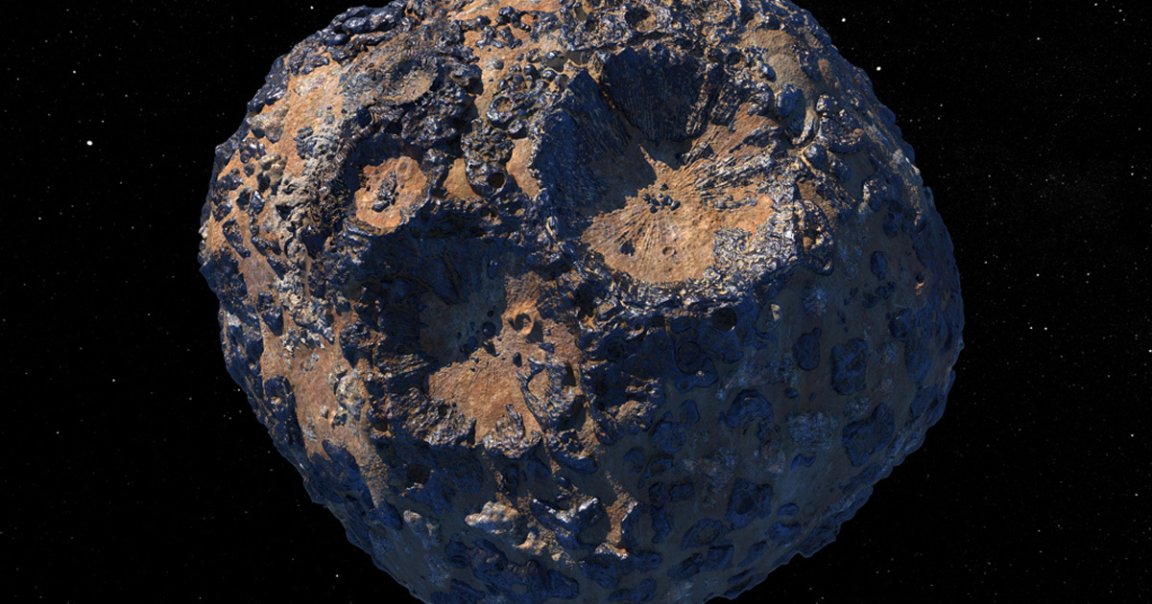
Rust Belt
A gigantic, metallic asteroid dubbed 16 Psyche lurking in the constellation of Capricornus is estimated to be worth a staggering $100,000 quadrillion because scientists believe it’s chock full of precious rare metals.
But NASA’s James Webb Space Telescope has revealed this very expensive rock, which is about 140 miles across, may need a hard and vigorous polish. New telescope data suggest there’s rust collecting on its surface, according to a team of researchers, who published their findings in a preprint and accepted into the Planetary Science Journal.
The researchers picked up chemical signatures of hydroxyls, bonded oxygen and hydrogen atoms. This same chemical signature has been detected on meteorites that also bear rust, carbon, and water, the researchers told Live Science. They think the hydroxyls have combined with metal on the asteroid to form rust.
Beyond this interesting finding, the observations could yield tantalizing clues to Psyche’s origins and the early years of the solar system, according to the researchers.
Wonder Years
The scientists believe the hydroxyls arrived at the asteroid in either of two ways: meteorites carrying the chemical impacted Psyche at some point in the past or they originated within the asteroid itself, suggesting that Psyche came from outside the asteroid belt between Mars and Jupiter and arrived at its current location, according to the paper.
Scientists have also speculated that Psyche is the leftover remnant of a planetesimal, the building blocks to rocky planets like Earth, according to NASA. In other words, studying a rock like Psyche could be the closest researchers will get to studying the Earth’s core.
To get a better idea about Psyche’s origins, NASA launched a spacecraft bearing the same name as the asteroid in October 2023 and it’s slated to arrive at Psyche in mid-2029, according to the space agency.
Coupled with this recent data from the space telescope, NASA may be able to finally get a fuller picture of Psyche’s chemical composition and history, and perhaps answer some fundamental questions about our planet’s ancient origin story.
More on asteroids: Earth Surrounded by Dark Comets, Astronomers Claim